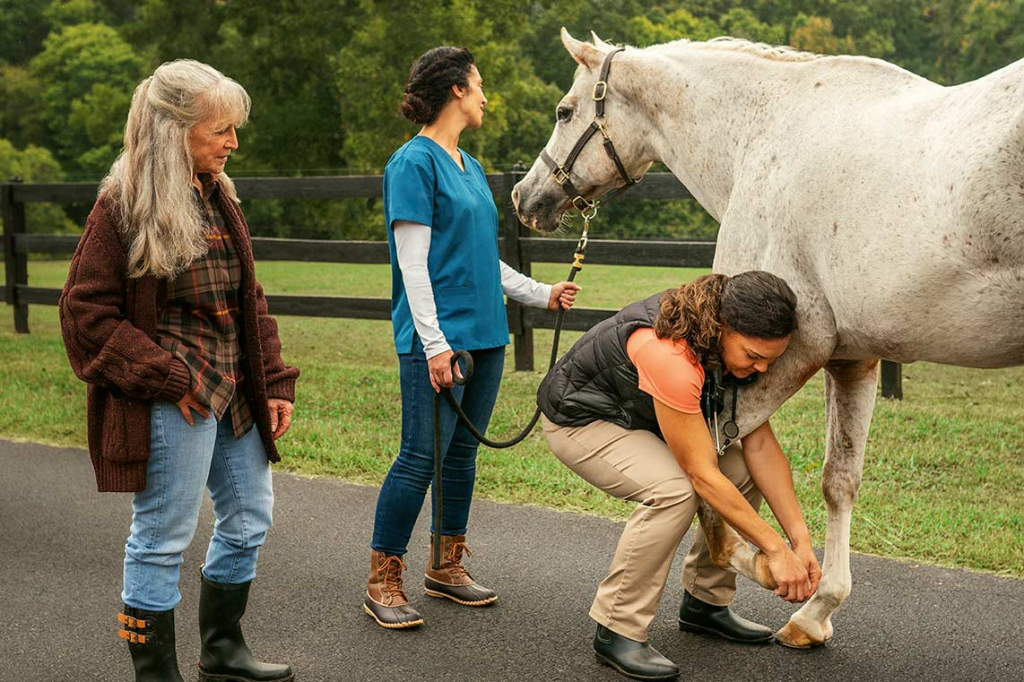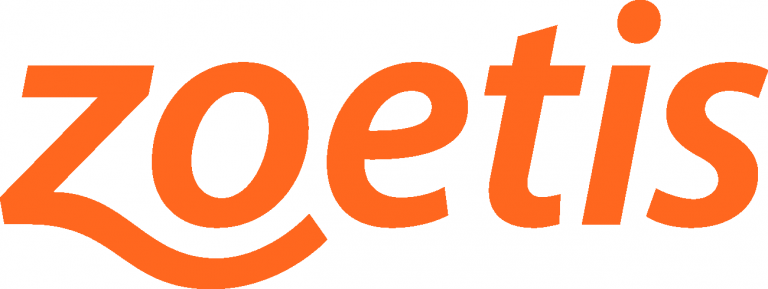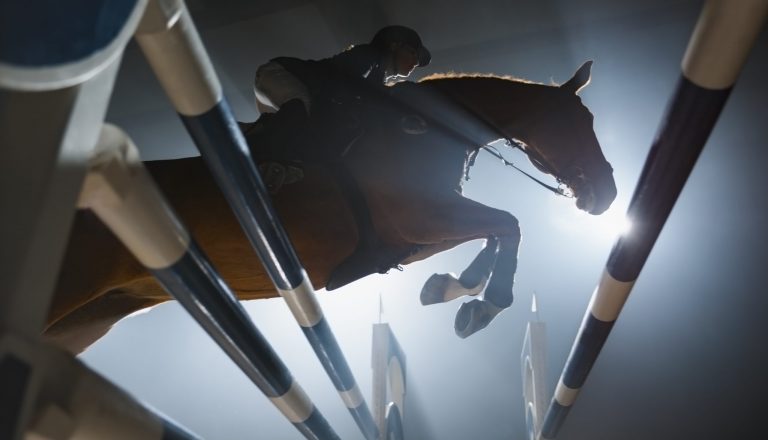
You likely consider your horse part of your family—and when they show signs of joint discomfort from the natural wear and tear of training or the aging process, it’s hard to see them working through pain.
Despite the challenges that come with joint disease in horses, regenerative medicine technologies allow veterinarians to approach equine pain management with an entirely different set of tools.
Your horse’s self-healing abilities
Today, veterinarians have the option to manage lameness by concentrating the natural properties found in a horse’s blood or bone marrow with the assistance of regenerative medicine devices (RMDs). An increasing body of evidence reveals that these devices have the potential to modify the course of joint disease by promoting healing and reducing pain and inflammation in horses.1
Below are three types of horses a veterinarian is likely to recommend for treatment with RMDs:
- Competitive horses with concerns about career longevity, maximizing their joint health or drug withdrawal times
- Young horses whose athletic career you want to maximize while minimizing the negative impact on cartilage from chronic repetitive steroid use
- PPID, metabolic or insulin-resistant equine patients, or those with a history of propensity to develop laminitis
Pro-Stride® APS device for equine joint pain
Did you know that osteoarthritis (OA) is the leading cause of lameness in horses, affecting more than 60% of them at some point in their life?2 To help reduce inflammation and promote healing within the joint, veterinarians may recommend harnessing the unique properties found in your horse’s blood.2,3 The process below has been shown to improve a horse’s lameness grade for up to one year after a single injection, and in some cases even longer.3,4,5
- How it works: A veterinarian collects blood from your horse, and then the blood is placed into the Pro-Stride APS (autologous protein solution) device and centrifuged. This allows the device to isolate anti-inflammatory cytokines and growth factors from the blood. The final concentrated solution is then injected back into your horse’s joint(s) to promote healing and decrease pain and inflammation.
- Method: With APS, it’s possible to address the root cause of orthopedic disease, slow disease progression and help reduce the number of maintenance injections your horse receives.3 The goal is to help alleviate pain and prolong your horse’s athletic career beyond masking symptoms. The growth factors contained in the solution accelerate cell growth, enhance cell survival, decrease inflammation and assist in tissue repair.3
Horse-powered healing
This stall-side procedure takes less than 30 minutes to perform right at the farm and can help address existing OA while preventing further disease progression.1
- Your veterinarian should conduct a complete lameness evaluation to confirm the diagnosis and treatment location, regardless of whether it’s for an injury or maintenance purposes
- Typically, significant positive outcomes can be observed within 2 to 4 weeks, sometimes even earlier, when using Pro-Stride2
- An APS concentration can help regenerate soft tissue and slow the progression of joint disease and has been shown to have a beneficial effect on rehabilitation time, meaning horses can potentially get back to performing sooner4,5
- The Pro-Stride APS device can also be used after arthroscopy, surgical fracture repair, chip removal or osteochondritis dissecans surgery to help decrease inflammation in the joint post operatively
A Pro-Stride APS solution is safe for use in all joints, including:
- Stifles with meniscal or cruciate injuries
- Coffin bone
- Navicular bursa
- Pastern
- Fetlock
- Carpus
- Elbow
- Shoulder
- Hock
- Stifle
- Hip
- Sacroiliac joint
As with any care decision, a veterinarian’s case selection and early action is important. While Pro-Stride can aid in pain management secondary to OA, your horse may likely see faster and longer-lasting results in mild to moderate cases when used as a first-line approach versus in chronic end-stage joints where no other treatment has improved the outcome.
Other RMDs to discuss with your veterinarian
Restigen® PRP is an extensively clinically studied Platelet-Rich Plasma Device with considerable scientific backing, used primarily for soft tissue injuries.2,6 Additionally, the Centrate® BMA (bone marrow aspirate) device allows for a rapid concentration of bone marrow aspirate for injuries to soft tissues and areas were soft tissue attaches to bone (for example, proximal suspensory ligament injuries or meniscal injuries in the stifle).
All of these devices can be processed in under 30 minutes stall-side or in the clinic or hospital at the same time as the initial appointment. The resulting cell solution is injected fresh, never frozen, and doesn’t require incubation or a series of injections, making it’s use really convenient and cost effective.
Resources on RMDs
Regenerative medicine is an exciting field with the potential to help manage joint disease and OA in horses. You can learn more about these horse-powered solutions by talking with your veterinarian to discuss whether your horse could be a good candidate for RMD treatment options.
- Here’s a brochure with more information on equine RMDs
- Visit zoetisequine.com/lameness to learn more about RMDs so you can discuss them at your horse’s next veterinary appointment
References
- Bertone AL, Ishihara A, Zekas LJ, et al. Evaluation of a single intra-articular injection of autologous protein solution for treatment of osteoarthritis in horses. Am J Vet Res. 2014;75(2):141-151. doi: 10.2460/ajvr.75.2.141.
- McIlwraith W, Frisbie D, René P, et al. Joint diease in the horse (2nd edition). 2016;1. doi: 10.1016/C2012-0-00759-4.
- Muir R, Reisbig N, Baria M, et al. The concentration of plasma provides additional bioactive proteins in platelet and autologous protein solutions. The American J of Sports Medicine. 2019;47(8):1955-1963.
- Linardi RL, Dodson ME, Moss KL, et al. The effect of autologous protein solution on the inflammatory cascade in stimulated equine chondrocytes. Frontiers Vet Sci. 2019;6:1-9. doi: 10.3389/fvets.2019.00064.
- Gaesser AM, Underwood C, Linardi RL, et al. Evaluation of autologous protein solution injection for treatment of superficial digital flexor tendonitis in an equine model. Frontiers Vet Sci. 2021;8. doi: 10.3389/fvets.2021.697551.
- Chahla J, Cinque M, Piuzzi N, et al. A call for standardization in platelet-rich plasma preparation protocols and composition reporting. J of Bone and Joint Surgery, Incorporated. 2017;99(20):1769-1779. doi: 10.2106/JBJS.16.01374.
All trademarks are the property of Zoetis Services LLC or a related company or a licensor unless otherwise noted. © 2023 Zoetis Services LLC. All rights reserved. PRS-00043











